The Close Encounters Festival has long served as a bridge between Swiss and Georgian experimental music scenes, evolving over its 20-year history to embrace an ever-expanding array of sonic explorations. The 2025 edition, held from February 15-17 in Tbilisi, was a concentrated yet deeply immersive experience, packed with avant-garde performances, technological innovations, and cross-cultural collaborations that challenged and redefined the very nature of sound.
The Long Night of Encounters: A Sonic Odyssey at Tbili Orgia
The festival’s opening night unfolded at Club Tbili Orgia, an epicenter of Georgia’s experimental electronic scene. The venue’s raw industrial aesthetic provided the perfect backdrop for a night of boundary-pushing performances. Ensemble KIOSK set the tone with a program that honored both Georgian contemporary composers and the late Ryuichi Sakamoto. Their nuanced approach to experimental classical music resonated with the audience, seamlessly blending the ethereal vocal textures of Russudan Meipariani with the electronic undertones of Nika Machaidze.
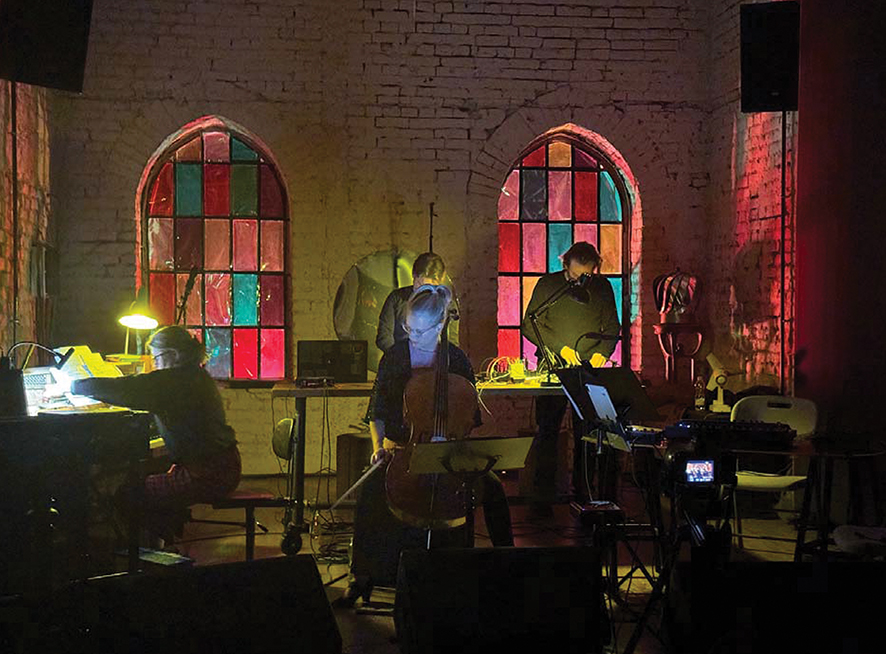
Following KIOSK, trio u/r ventured into uncharted sonic territories with a 30-minute composition crafted specifically for Close Encounters 2025. Their interplay of prepared piano, feedback loops, and live sampling blurred the lines between composition and improvisation, immersing the audience in a fluctuating soundscape of tension and release. The night culminated in a thrilling sequence of live sets by Georgia’s electronic pioneers. Nikakoi, TBA, TINA, and TeTe Noise unleashed an electrifying blend of drone, techno, and noise textures, proving once again that Tbilisi’s electronic scene remains at the cutting edge of global experimental music.
Lost in Sound: The Intersection of Technology and Music
The second night of Close Encounters 2025 at the Mutant Radio Concert Space was a deep dive into interactivity, offering two groundbreaking performances that expanded the festival’s conceptual framework. Giorgi Koberidze’s ‘MurMur’ and Alexandre Kordzaia’s ‘Lost in Sound’ redefined the traditional relationship between audience and sound, turning listeners into active participants in their own auditory journeys. These performances not only challenged the conventional concert format but also raised profound questions about sound, memory, and digital creativity.
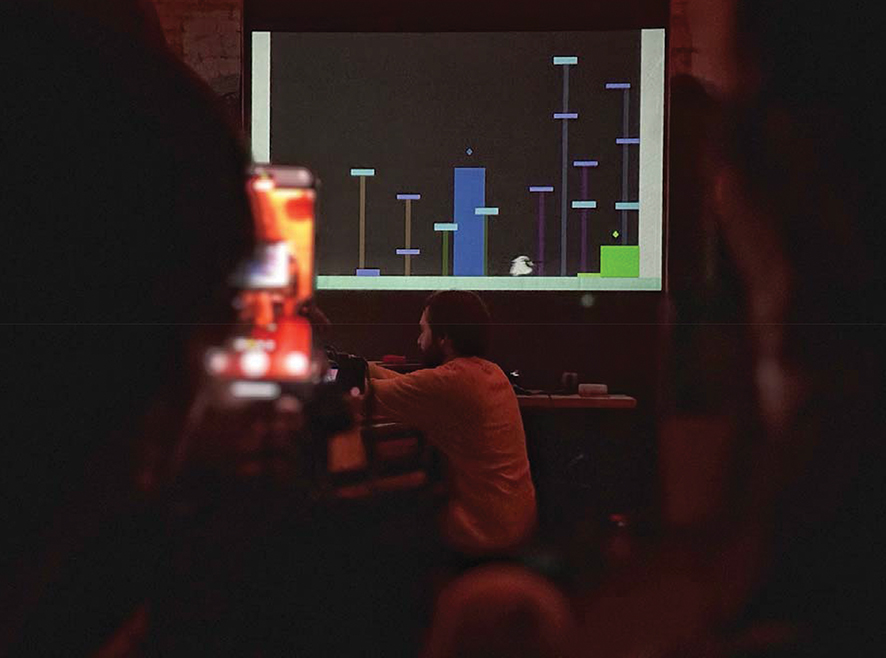
After the structured performances, Koberidze and Kordzaia came together for an improvised B2B set, seamlessly blending a kaleidoscopic array of tracks from across genres. This final segment of the evening felt like a release—a moment where the rigid boundaries between composed work and spontaneous creation collapsed entirely. The set transitioned from ambient textures to industrial beats, from classical motifs to fractured electronics, mirroring the themes of transformation and fluidity that defined the night.
MurMur: The Sound of a Disappearing World
Giorgi Koberidze’s ‘MurMur’ was not just a sound installation, but a meditation on loss—of history, of human imperfections, and of organic artistic evolution. The piece transformed the concert space into an intimate zone of listening, requiring audiences to physically lean in, press their ears to the installation, and engage in an almost whispered dialogue with the work.
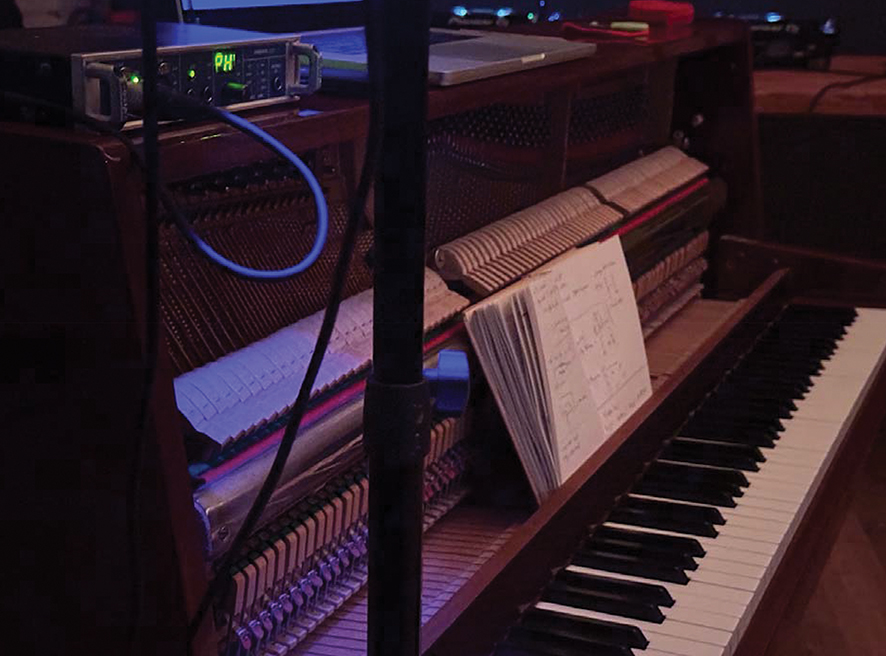
At the core of ‘MurMur’ were four bells, each housing a carefully curated soundscape: the rustling of a tree from San Bartholomew, the distant echo of musicians practicing in a conservatory, the accidental yet poignant clatter of broken glass, and the resonant toll of a bell—a symbol of Georgian tradition and continuity. These sounds, individually rich yet threatened by urban modernization, were reimagined through live processing, creating an ever-evolving composition that blurred the boundaries between decay and preservation.
Unlike typical sound installations, ‘MurMur’ did not seek resolution; rather, it invited reflection. By requiring listeners to approach closely, it evoked the act of eavesdropping on a world slipping away. The experience was hauntingly tactile, as if the audience was cradling fragile sonic memories in their hands. In an era where cultural erasure often goes unnoticed, Koberidze’s work served as a quiet but urgent act of defiance.
Lost in Sound: A Game That Composes Itself
If ‘MurMur’ was about listening to what is vanishing, Alexandre Kordzaia’s ‘Lost in Sound’ was about creating something entirely new. Blurring the line between composer, performer, and player, Kordzaia’s project transformed composition into an interactive, evolving process where each participant left with a unique sonic artifact of their own making.
At first glance, ‘Lost in Sound’ appeared to be a conventional 2D platformer, with players guiding a small creature through obstacles and landscapes. But every movement, every jump, and every solved puzzle was also a musical decision, generating tones, harmonies, and textures that shaped the game’s soundtrack in real time. Unlike traditional video game scores, which serve as atmospheric backdrops, Kordzaia’s sound design was fully integrated into the mechanics, making the player’s choices inseparable from the composition itself.
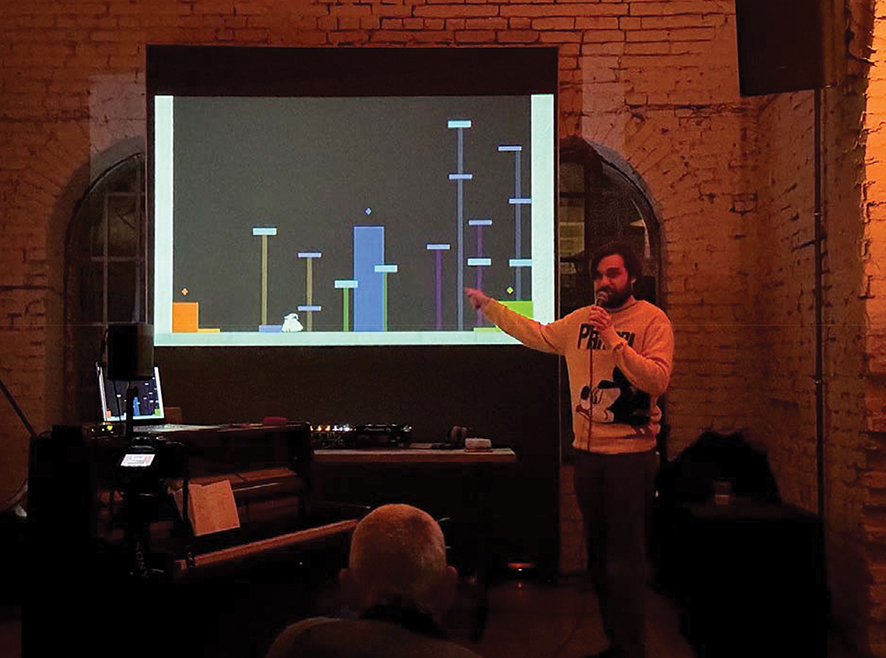
The sheer breadth of Kordzaia’s sound library—ranging from acoustic instruments and electronic tones to percussive noises and everyday recordings—ensured that no two playthroughs were alike. The resulting compositions were deeply personal, reflecting each player’s instinctive responses, hesitations, and bursts of creativity. After experiencing the demo, festival attendees were even given the opportunity to take home recordings of their own gameplay—a deeply novel approach to audience participation.
More than just a game or a performance, ‘Lost in Sound’ was an experiment in agency. It questioned the rigid hierarchies of composer and performer, offering instead a fluid and democratized approach to music-making. Kordzaia’s work hinted at a future where music is not only something we listen to, but something we actively construct through play.
Whispers and Pillars: A Night of Contemplation and Sonic Monuments
The festival’s closing night, also at Mutant Radio, provided a more introspective contrast to the previous evenings. Ensemble KIOSK, joined by cellist Karolina Öhman and electronic music visionary Natalie Beridze, curated a program of deep, contemplative works.
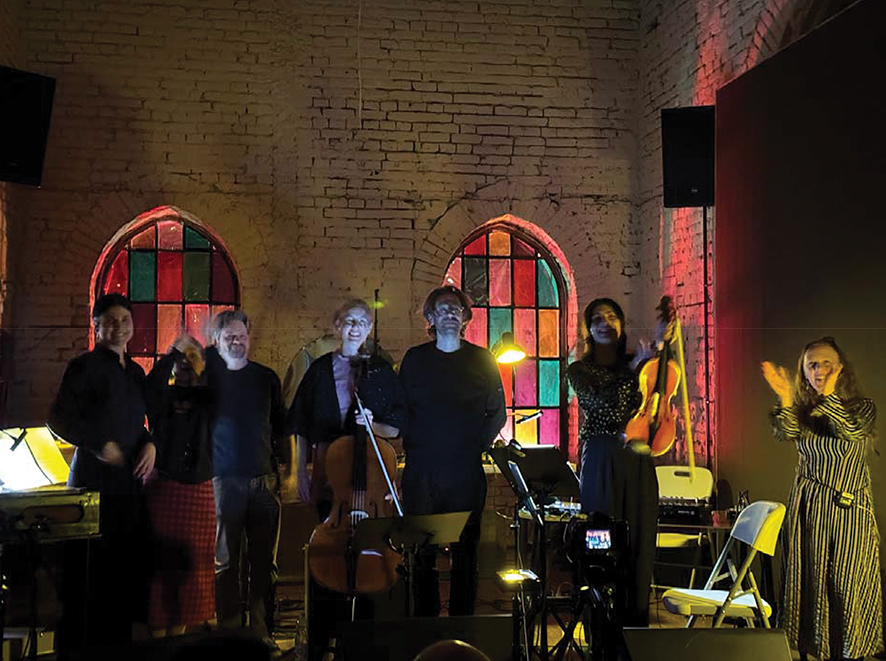
From Sandeep Bhagwati’s storytelling-infused ‘Märchenbilder’ to the raw emotional intensity of Galina Ustvolskaya’s ‘Grand Duet,’ the evening unfolded as a profound meditation on sound and time. Meanwhile, trio u/r punctuated the program with their “sound pillars,” offering moments of stillness amid the musical turbulence.
Particularly striking were the new works by Georgian composers. Natalie Beridze’s ‘Toy with Modes’ and Russudan Meipariani’s ‘Hoquett for Kiosk’ showcased the rich tapestry of contemporary Georgian composition, blending electronic elements with traditional timbres and instruments.
A Festival That Defies Categories
“Music shouldn’t be silent, music should speak…” – This is how the pianist and creative director of Close Encounters Festival, Tamriko Kordzaia, answered a question about the ethics and challenges of holding a festival during times of political instability. Close Encounters 2025 was more than just a music festival—it was a testament to the power of artistic exchange in an era of uncertainty. At a time when cultural expression in Georgia faces mounting challenges, the festival’s compact yet bold programming served as a declaration of resilience and innovation.
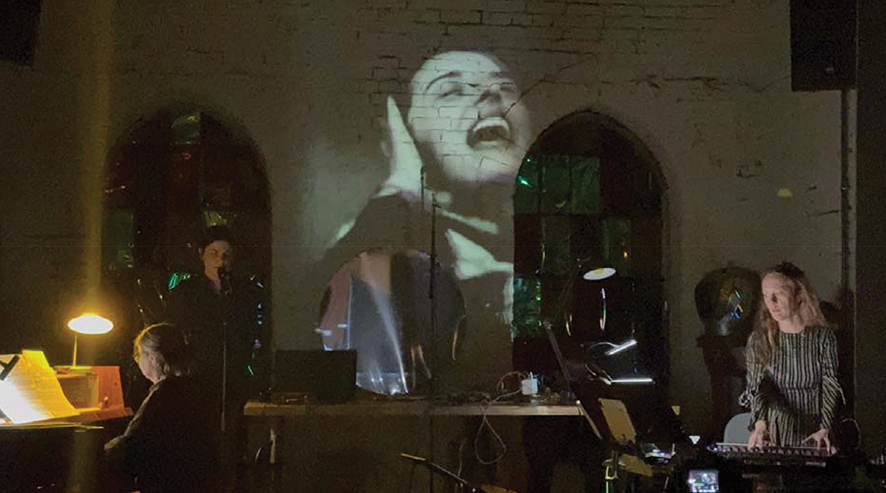
With plans for a Swiss edition later this year, Close Encounters continues to expand its reach, fostering new dialogues between artists and audiences across borders. If this year’s edition is any indication, the future of experimental music lies not in predefined genres, but in the fearless collision of ideas, sounds, and perspectives.
By Ivan Nechaev














